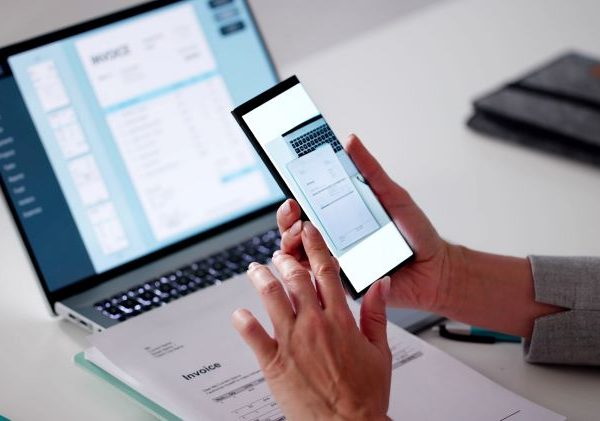Blitzit: A Productivity and Pomodoro App

Productivity apps are great because they are useful to pretty much anyone who is of school age or older. Whether you are a student, or a working professional, you’re going to have lots of things happening in both your personal and work life that you’ll need to keep track of.
Quizlet: A Smart Way to Study

Almost ten years ago we reviewed Quizlet for the first time. It was a great app then, and today it’s even better thanks to the app’s integration of AI technology.
Quizlet, currently the top contender for Flashcard apps in the app store, is a great way to study. Simply put, the app allows you to either create your own custom flashcard sets by scanning documents with the build scanner, selecting pre-downloaded images or text files, creating them manually, or choosing from a library of pre-existing cards.
Docutain: Organized OCR and Scanning

We’ve looked at plenty of Optical Character Recognition (OCR) apps in the past, but with OCR apps I find that it’s often worth having a couple different options on hand, since these apps don’t always produce the same results depending on what kind of source material you have to scan.
Docutain is an app for iOS and Android that does all the things you’d expect from an OCR app but also goes further than most in its approach to document organization, so for users who scan a wide variety of documents, this app is especially well laid out.
Miro: An Accessible Workspace App

If you need to collaborate on a project virtually, it’s hard to beat a workspace app. These apps are ideal because they provide a virtual whiteboard that allows users to plan and flesh out projects remotely, allowing members from all over the world to work together in real time. In fact, even for groups that are able to meet in-person, I can’t be convinced that this approach isn’t far more efficient, not to mention accessible, than a traditional, in-person whiteboard approach to project planning.
Miro is one of many of such apps, but it deserves some special attention today because of how seriously they take accessibility. The app is constantly being tested and audited by screen reader users to ensure that the app is as accessible as possible. It is also packed with helpful accessibility features.
We Have Solutions! – Episode 38: Miro App, Mac Accessibility Updates, and Brain Computer Interfaces

In this episode, we talk about the highly accessible Miro app, Mac accessibility updates, and finally, we explore the possibilities of assistive technology bolstered by brain-computer interfaces, including Neuralink’s recent milestone, where a patient was able to draw an image using only their brain.
ABBYY FineReader: PDF Scanner & OCR

OCR (Optical Character Recognition) technology is always great to have in one’s back pocket, because it allows you to easily scan and digitize documents with just your smart phone. In past articles we have looked at both PrizmoGo and Microsoft Lens, and we consider them to be among the best OCR apps available right now.
However, there is another well-established OCR app that we haven’t talked about before, and that’s going to be the subject of today’s e-bulletin.
ABBYY Fine Reader is an AI-powered scanner designed to scan and capture paper documents, books, agreements, receipts, magazine articles, notes, recipes, charts, tables, slides, whiteboards, and even billboards on the street.
Joplin: Open Source Notetaking

Notetaking apps are helpful for a wide variety of individuals. Whether you are a student or a professional, there’s a good chance that at some point in your life you will need to take notes. And while I still prefer OneNote because of its Microsoft 365 integration, there are plenty of other notetaking apps worth considering.
Joplin is an open source note-taking app that can support a wide variety of multimedia types including images, videos, audio files, and more. Users can also create math expressions and diagrams directly in the app.
Magrid – Early Learning

Today we are going to look at an early learning math app intended for students from ages three to six. Magrid is a language-free math app designed to be used by students from a variety of linguistic and academic backgrounds. It’s also designed to be approachable for students with diverse learning styles.
The app features a variety of visual spatial activities including mental rotation, mental folding, working memory, eye-hand coordination, geometry and pattern, and visual perception. There are also a variety of numerical exercises available including extended learning, number comparison, ordinality, quantity recognition, number mapping, and number recognition.
NotebookLM: A Conversational Research Tool

We recently created a video comparing some of our favorite AI research tools. Soon after releasing the video, one of my colleagues mentioned a new AI research tool that had recently been released, and I have to say, I am thoroughly impressed by this app! So, without further ado, let’s explore another incredible AI research tool!
Google Notebook LM is a brand-new AI research tool based off Google’s Gemini 2.0 chatbot. As of right now, only the browser-based version of the app is available to try, but the mobile version of the app is coming soon. In fact, users can currently pre-register for the mobile version of the app through the Google Play store.
Book Creator: Easy and Accessible ePub Authoring

While there are lots of ePub (electronic publication) and other digital book sharing apps out there already, sometimes you or your student might want to create your own digital book. Or perhaps your favorite book isn’t available in a digital or accessible format.
Book Creator is an ePub creator app that allows you to create and publish your own accessible content with ease!



